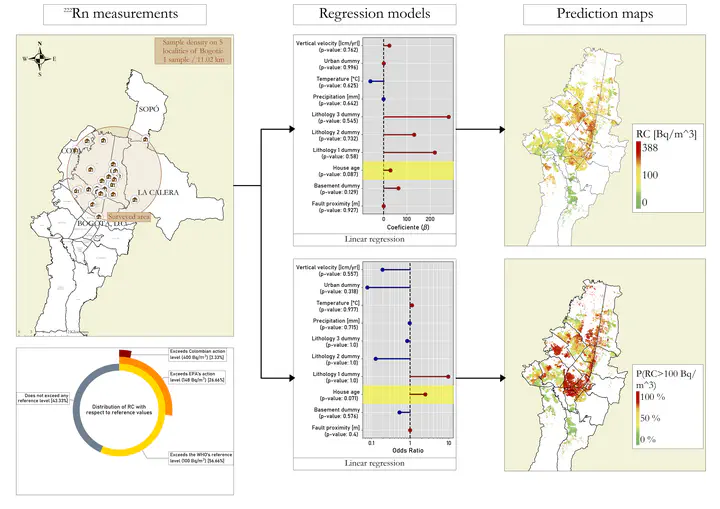 Graphical abstract
Graphical abstractAbstract
Radon (222Rn) is a naturally occurring gas that has been causally related to lung cancer (Field, 2015). Despite its potential impacts, and a geologic and climatic setting that may favour its concentrations in some regions of the country, this is only the third study of residential 222Rn in Colombia to look at residential 222Rn concentrations (RC). We measured RC for 35 days in 30 houses using Alpha-track type detectors (LR-115) (Fig. 1). The samples were processed by the FINUAS laboratory (see RojasArias et al., 2020 for details). The measured RC presented a geometric mean of 90.85 Bq/m3 , and the maximum value detected was 407 ± 10 Bq/m3. Strikingly, 56.66% of the residences exceeded the WHO’s recommended level of 100 Bq/m3 (Fig. 1). Using a logistic regression model, the age of the house presented a significant association with the odds of exceeding the WHO’s recommendations (OR=2.47, pvalue=0.07). A linear regression model also showed that for each 10 years increase in age, there was a significant increase in RC (29.10 Bq/m3, p-value = 0.08). Even though the dataset was limited, both regression models were applied to houses in the surveyed area to create 222Rn prediction maps for zones that were not directly covered in this study. Both maps showed higher RC in the oldest areas of Northern Bogotá (Fig. 1). The RC found in this study are the highest reported in the country, which highlights the importance of expanding this type of studies as well as the urgent need to revise the existing action levels contemplated in the Colombian legislation.